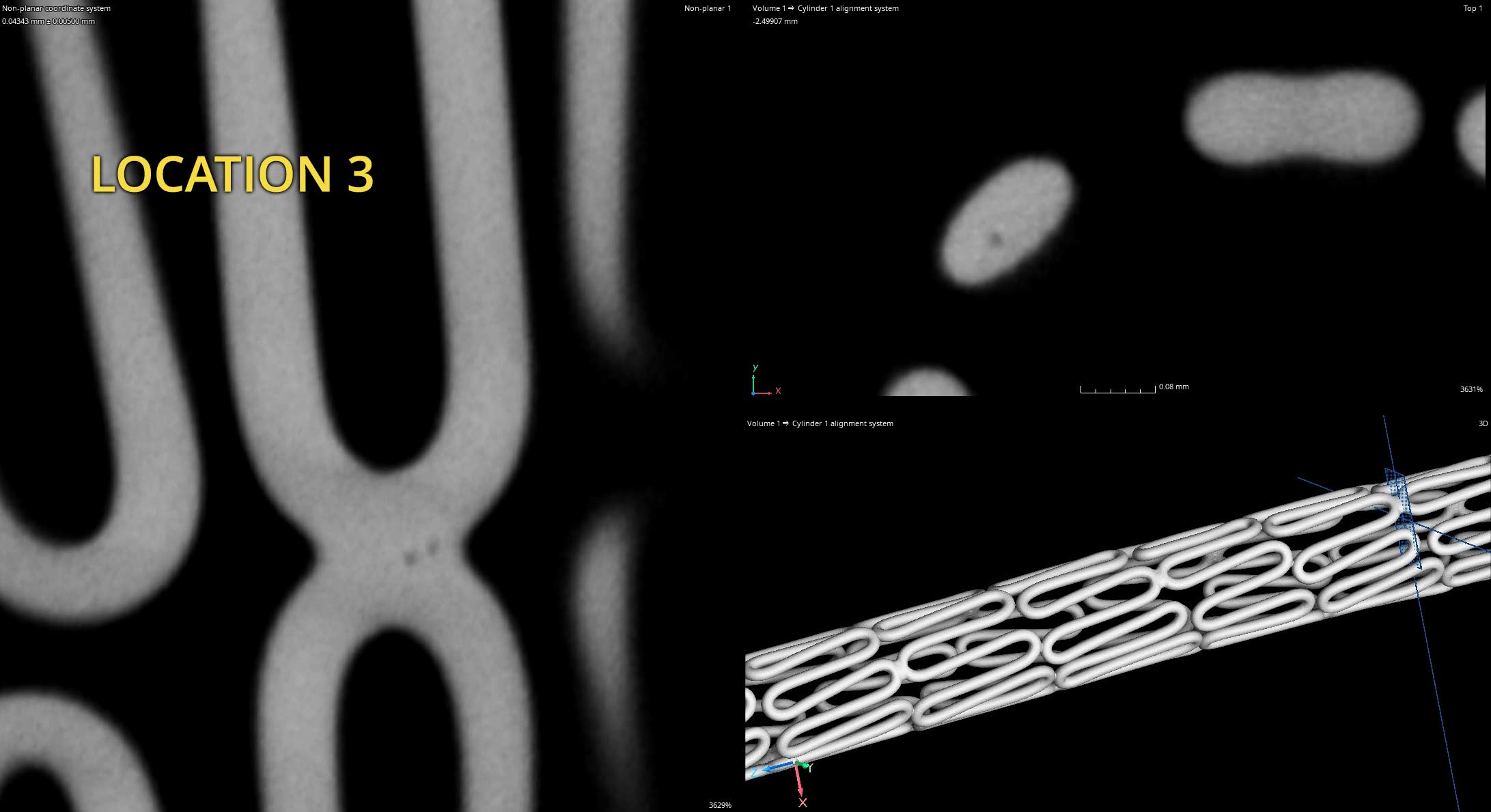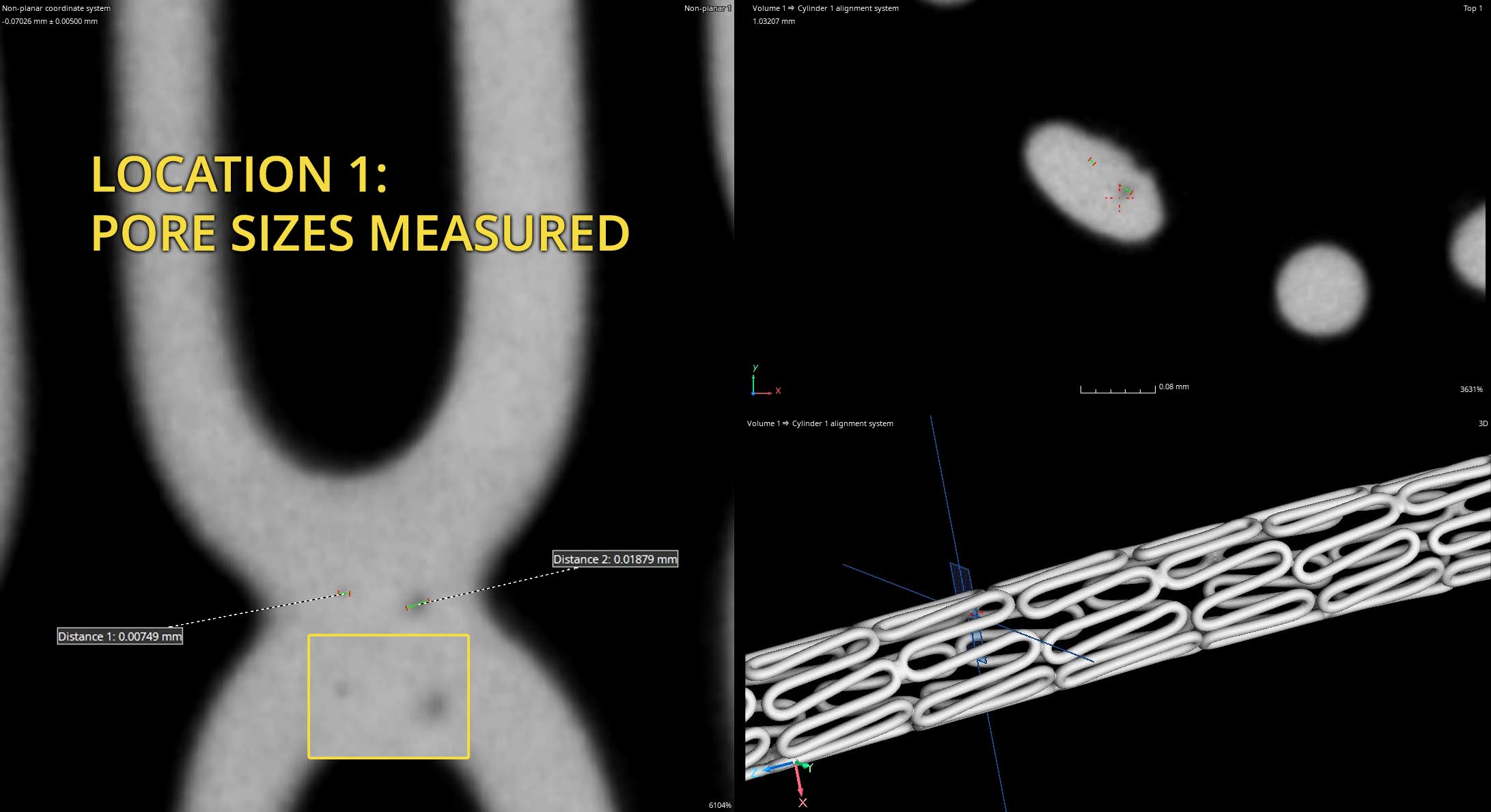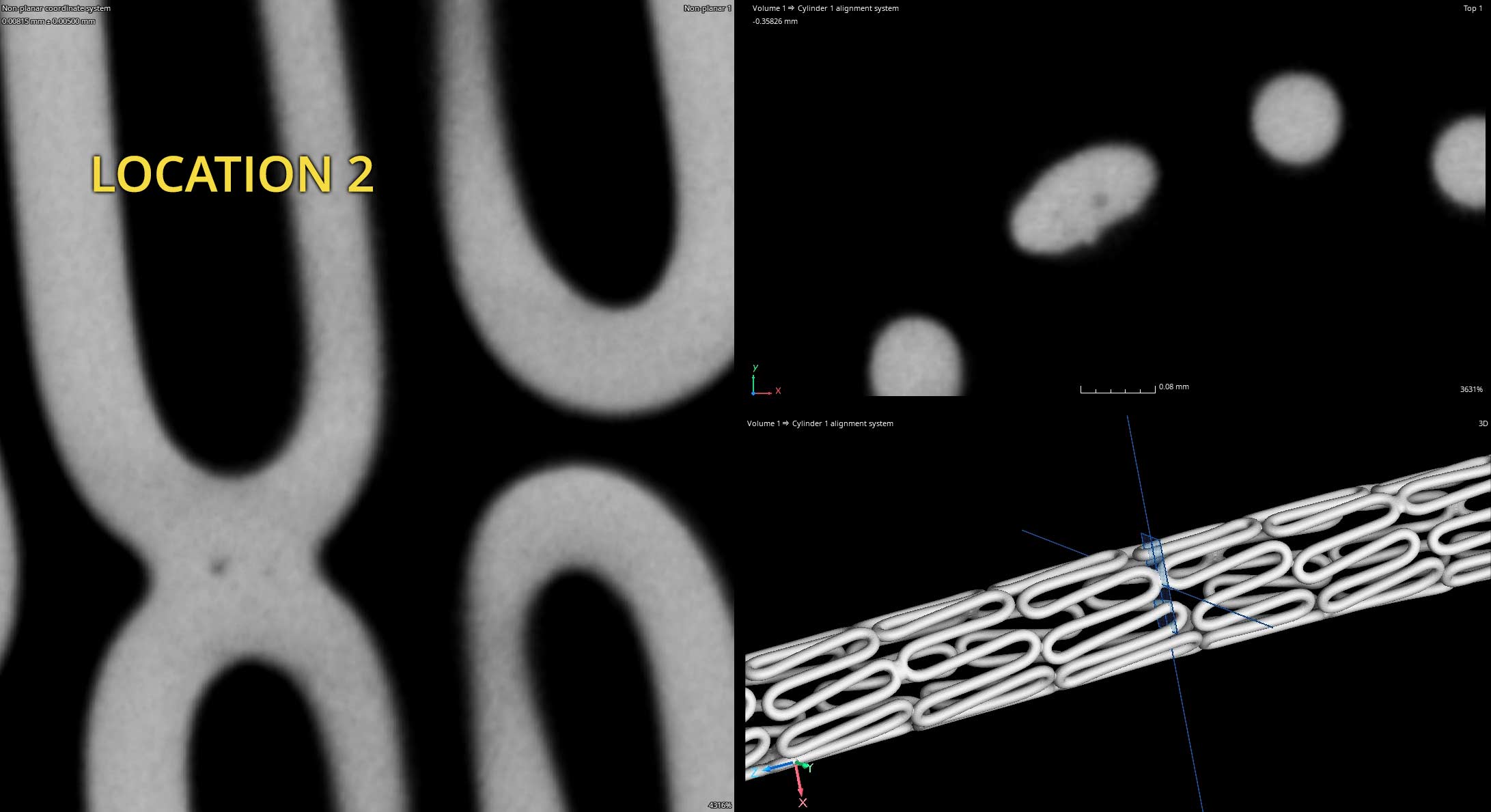3um RESOLUTION CT IMAGING OF STENT WELDS
Coronary stents are a specific type of stent used in the treatment of coronary artery disease. These stents are implanted into the coronary arteries, which are the blood vessels that supply oxygen-rich blood to the heart muscle. Coronary artery disease occurs when these arteries become narrowed or blocked due to the buildup of plaque, which is made up of cholesterol, fat, and other substances.
Weld quality directly impacts the safety, efficacy, and longevity of coronary stents. Ensuring high-quality welds is essential for the successful treatment of coronary artery disease and the overall well-being of patients undergoing stent implantation.
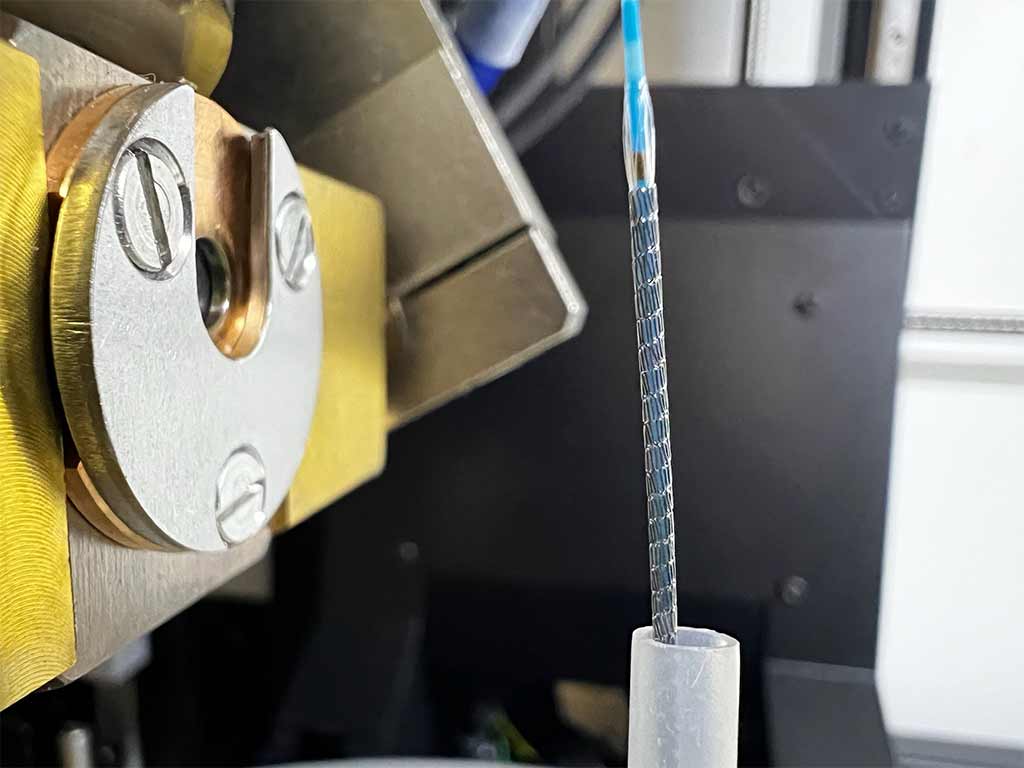
Coronary stents often have welds as part of their construction. These welds serve several important purposes:
Joining Components: Stents are typically made from thin metal tubes or wire mesh. Welding is used to join these components together to form the desired stent structure. The welds ensure that the stent maintains its shape and structural integrity during deployment and once it’s in place within the artery.
Sealing Edges: Welding can be used to seal the edges of the metal components, preventing them from unraveling or causing damage to the artery walls during insertion or deployment. This sealing helps to ensure the safety and effectiveness of the stent.
Reducing Material Weakness: Welding is often employed at points where different parts of the stent meet. These junctions can be weak spots if not properly reinforced, and welding helps to strengthen these areas, reducing the risk of failure or breakage.
Smooth Surface: Welding can be used to create smooth transitions between different sections of the stent, which can help to minimize irritation to the artery walls and reduce the risk of complications such as clot formation or restenosis (re-narrowing of the artery).
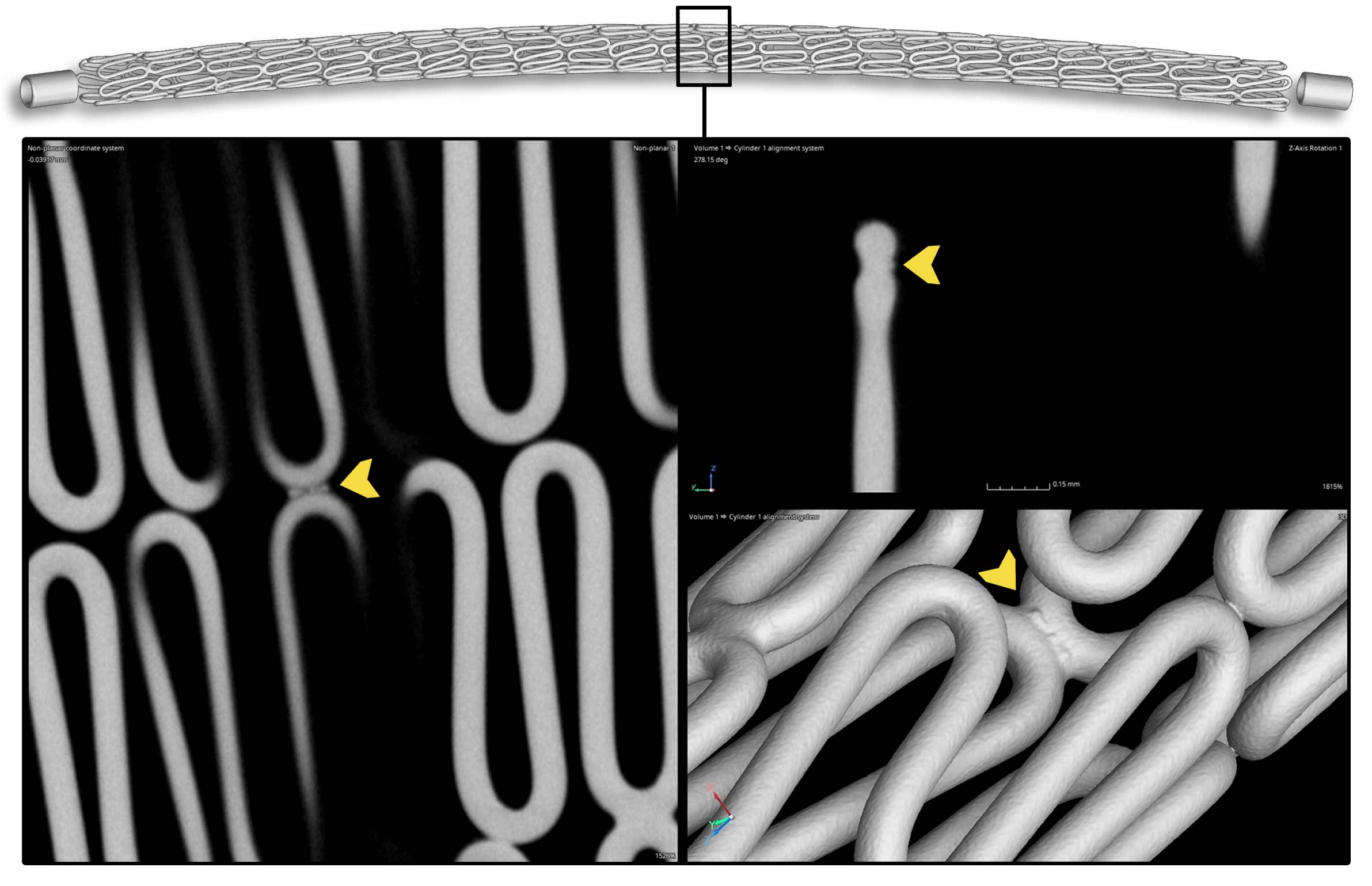
POROSITY IN STENT WELDS
Porosity in stent welds refers to the presence of small voids or air pockets within the welded region of the stent. This porosity can occur due to various factors during the welding process and can have significant implications for the quality and performance of the stent. Here are some key points regarding porosity in stent welds:
Reduced Mechanical Strength: Porosity weakens the welds, making them more prone to cracking, fracturing, or deformation under mechanical stress. This compromises the structural integrity of the stent and can lead to premature failure or breakage during deployment or while in place within the artery.
Increased Risk of Corrosion: Porous welds create pathways for corrosive agents, such as bodily fluids or environmental factors, to penetrate the stent material. This can accelerate corrosion processes, leading to degradation of the stent over time. Corrosion weakens the material and can result in structural failure, particularly in environments with high levels of oxidative stress.
Poor Biocompatibility: Porous welds may have rough or irregular surfaces, which can increase the risk of tissue irritation, inflammation, or thrombosis (blood clot formation) when the stent is implanted in the body. The presence of voids or air pockets within the welds can also serve as sites for bacterial adhesion, raising the risk of infection at the implantation site.
Compromised Drug Delivery (for Drug-Eluting Stents): In drug-eluting stents, where medications are coated onto the stent surface to prevent restenosis, porosity in the welds can affect the uniformity and integrity of the drug coating. This may result in uneven drug release or premature degradation of the drug layer, reducing the efficacy of the stent in preventing re-narrowing of the artery.
Difficulty in Inspection and Quality Control: Porosity in welds can be challenging to detect visually or with conventional inspection methods. This makes it difficult to ensure the quality and reliability of the stents during manufacturing. Advanced non-destructive testing techniques, such as X-ray and CT Scanning, may be required to identify and quantify porosity accurately.
